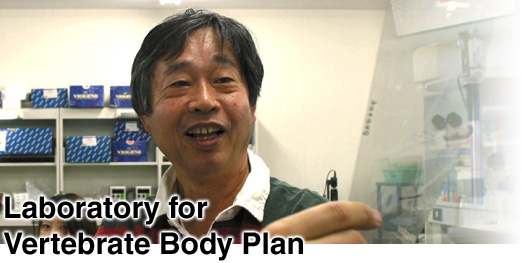




     |

All vertebrate species share certain features in the development of the brain, in that all vertebrate brains comprise four regions – telencephalon, diencephalon, mesencephalon and metencephalon (or cerebellum) – an organizational trait that is thought to have appeared with the advent of the vertebrate lineage. However, dramatic changes in this organization took place during the divergence of jawed (gnathostome) fishes from their jawless (agnathan) ancestors. Evolutionary modifications of the telencephalon first manifested in the reptiles, becoming even more pronounced with the development of a neocortex stratified into six layers regionalized by distinct physiological functions. However, the mechanisms that instruct the brain's laminar regions to conform to anterior-posterior and dorsal-ventral axis patterning programs, and the means by which each individual region is formed, remain unknown.
The head is the most highly layered of the body's structures and its development begins with anterior-posterior axis formation. This A-P axis patterning is one of the most primary phenomena in animal development, and the emergence of the vertebrate lineage has been accompanied by widespread adaptations to this fundamental rule, as evidenced by the diversity of mechanisms by which vertebrate taxa achieve the common ends of axis formation and jaw induction.
A long road lies ahead in the search for the origins of the Bauplan of the vertebrate head, but application of powerful new molecular biological techniques to the study of multiple vertebrate model species has now made it possible to study the question more comprehensively and in greater detail than ever before. Our laboratory is focusing on the ontogenetic and phylogenetic roles played by the Otx/Emx family of head gap genes as a route toward a better understanding of brain development. The question of what molecular mechanisms underlie the development of neocortical regions is central to that pursuit.